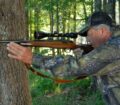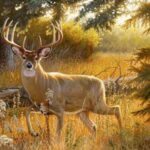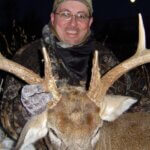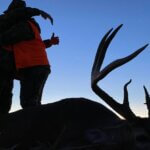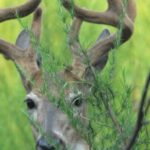Editor’s Note: Many hunters believe the more a deer sees or smells humans, the less likely that animal is to appear in the woods during daylight hours.
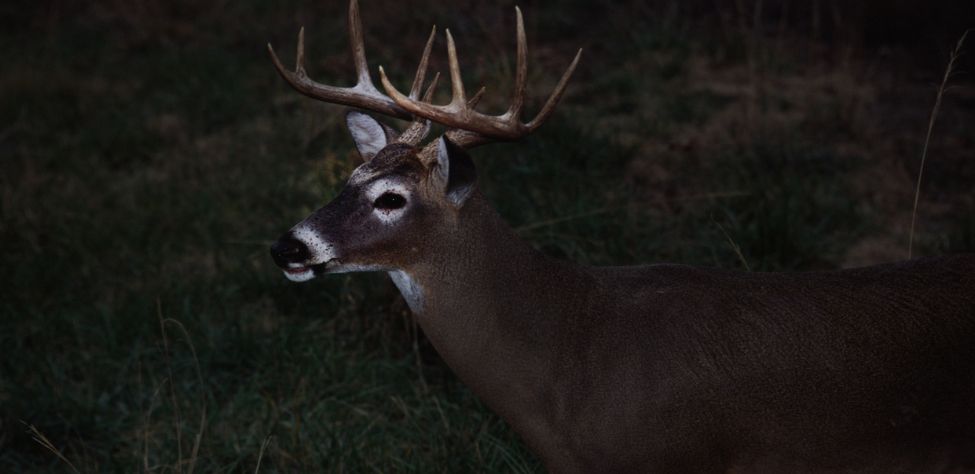
Brad Harris of Missouri, a longtime, well-known hunter and outdoor videographer, is convinced there are trophy bucks in many public hunting areas nationwide. However, he also believes these bucks have learned to use the cover of darkness to hide their movements. “The older-age-class bucks with several years of hunting experience know intimately the area of the woods they’ve lived in for many years as well as when and where hunters will appear during daylight hours,” Harris comments. “These bucks have learned more about how to pattern hunters and their movements than the hunters understand about how to pattern deer. These trophy bucks do not move in regions where hunters are during daylight hours. They’re not lying down all day but moving in places where the hunters aren’t.”
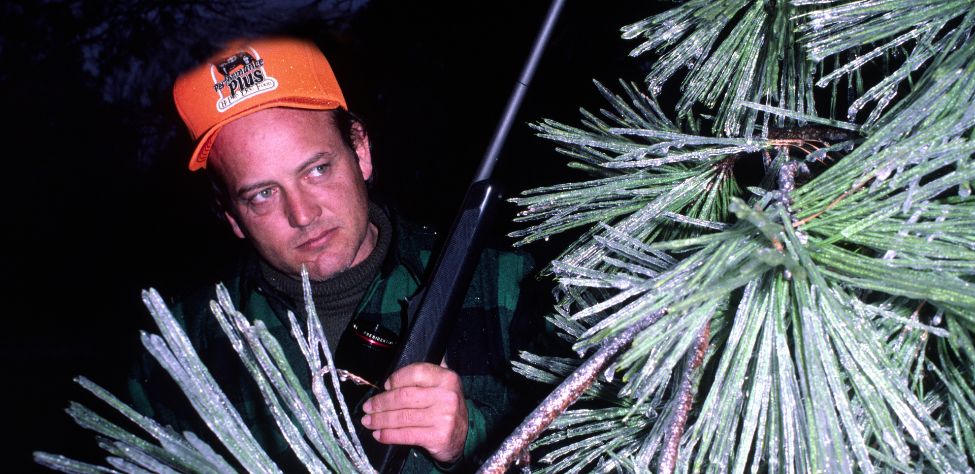
Dr. Bob Sheppard, a bowhunting instructor at schools across the South, agrees with Harris about Harris’ observations and offers an exciting way to find and take these nocturnal bucks. “At night, when deer move through the woods, they can smell where the hunter has been all day long,” Sheppard reports. “Then the older-class bucks avoid those places during daytime hours by moving into thick cover where no human voluntarily will walk. One of the regions where an older-age-class, nocturnal buck likes to stay during daytime hours is in a five- or six-year-old clear-cut. You can bag these nocturnal bucks by climbing as high as you can in a tree stand, which allows you to look down into a clear-cut.

”I’ve seen older-age-class bucks in these heavy-cover clear-cuts stand up, stretch, urinate, and defecate. They may walk one or two yards before lying down again. Using a pair of binoculars, I’ve spotted these bucks when they stand up or move their heads from side to side. This thick-cover, nocturnal bucks may only move 30 yards in a 15-hour day. But, if you’re high enough to look down into a ticket, oftentimes you can take these trophy bucks, even though they are nocturnal.”

How to Hunt and Take Big Buck Deer on Small Properties
In this book, you’ll hear from 14 hunters who either have gained permission or leased properties as small as six acres to as much as 250 acres, and how they consistently take older-age-class bucks off these little lands.
VERSIONS: AUDIBLE, KINDLE & PRINT

Jim Crumley’s Secrets of Bowhunting Deer
Using a black magic marker and a gray work jumpsuit, Jim Crumley of Buchanan, Virginia, drastically changed the nature and purpose of hunting camouflage when he created the first sportsman’s camouflage – Trebark. Crumley’s love of bowhunting and his desire to be more invisible changed hunting clothing forever.
In this hunting guide, he shares the wisdom that he’s learned throughout his lifetime about how to be a hunter, how to find a deer lease, how to scout for deer, and more.
Special features include how to:
- Have a magic 60 acres to hunt
- Decide the best equipment to use
- Find deer year-round
- Locate land to hunt
- Know the best place to put your tree stand
- Get bucks within bow range
VERSIONS: AUDIBLE, KINDLE & PRINT

How to Hunt Deer Like a Pro
How do you know if the land you hunt has a trophy deer on it? Wildlife manager Bob Zaiglin, of Uvalde, Texas and Jim Crumley, the father of modern-day hunting camouflage, tells you how to find out. GPS can make finding and taking that trophy buck easier. This hunting guide will teach you how to hunt big bucks where no one else can find them, how to call deer, and how to become versatile as a deer hunter, so that if one deer tactic doesn’t work, another one will.
In the chapter, “How to find Bucks at Scrape,” Dr. Keith Causey, retired professor of Wildlife Science at Auburn University, describes the best way to hunt a scrape.
Brad Harrison of Neosho, Missouri, is a nationally-known videographer, professional deer hunter and master at calling deer. Another master is Will Primos of Primos Game Calls. These two experts will tell the best deer calls and when to use them in this book.
And for over 20 years, Bo Pitman, lodge manager of White Oak Plantation, has been studying deer movement patterns. He explains what types of conditions are best for predicting deer movement.
VERSIONS: AUDIBLE, KINDLE & PRINT

Deer hunting and deer hunters are drastically changing each year. To learn new techniques for hunting deer and have more places to hunt, I’ve interviewed some of the best deer hunters in the nation and share their tactics in How to Hunt Deer Like a Pro: Volume II.
In Chapter 10, Jacob Lamar tells you his tactics for consistently taking older-age-class bucks on public lands in several states. Chapter 11, Bob Walker explains how to find places on public lands where you can hunt that 99 percent of the other hunters never have considered hunting. The Bonus Chapter with David Ramey tells you how, where, when and with what equipment to take big Kansas bucks on public lands by hunting in 100-degree weather when others won’t hunt.
Chapter 13, Mark Drury, his family and his guests take mature bucks every season by having more small places to hunt rather than one large property. Drury explains the strategy of having satellite farms to hunt that only may be 50-150 acres each or less. Chapter 15, Pat Reeve, who hunts far-northern states and Canada, says, “I don’t like hunting for mature bucks until the weather is 20 degrees or less.” Chapter 4, Dr. Larry Marchinton says that funnels are the most-reliable stand sites to hunt for big bucks and tells why.
VERSIONS: AUDIBLE & PRINT
Tomorrow: How to Increase Big Deer Sightings

